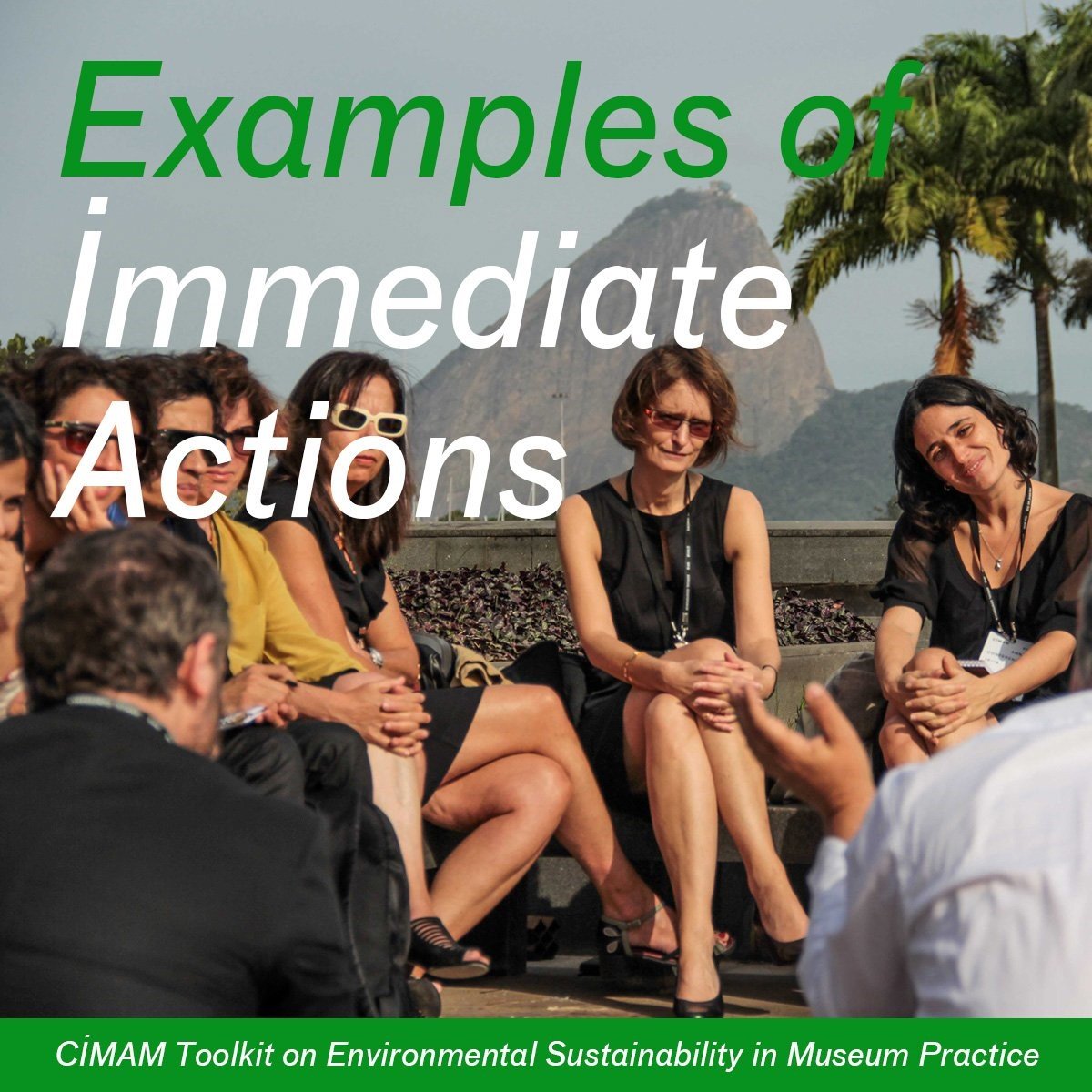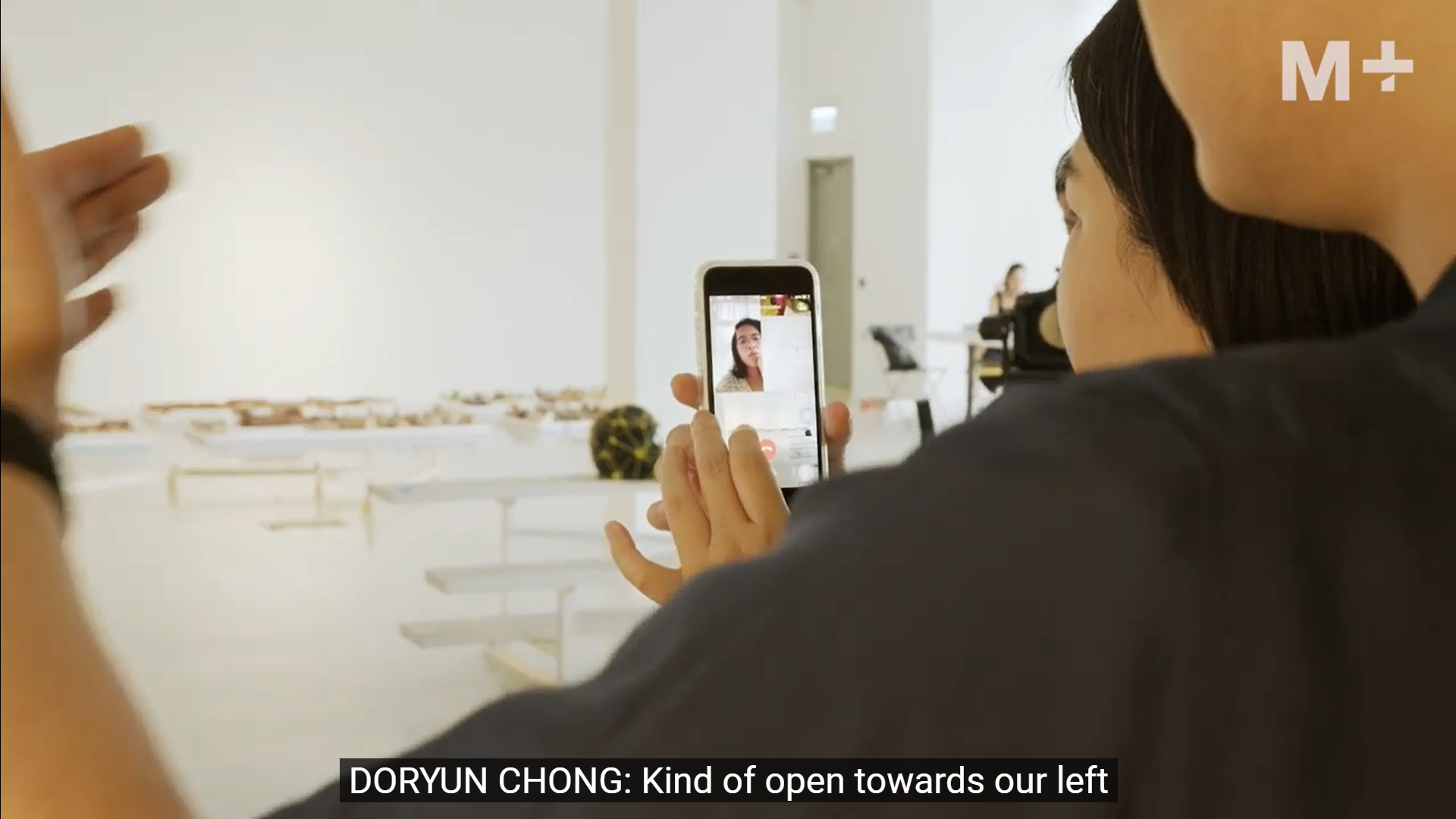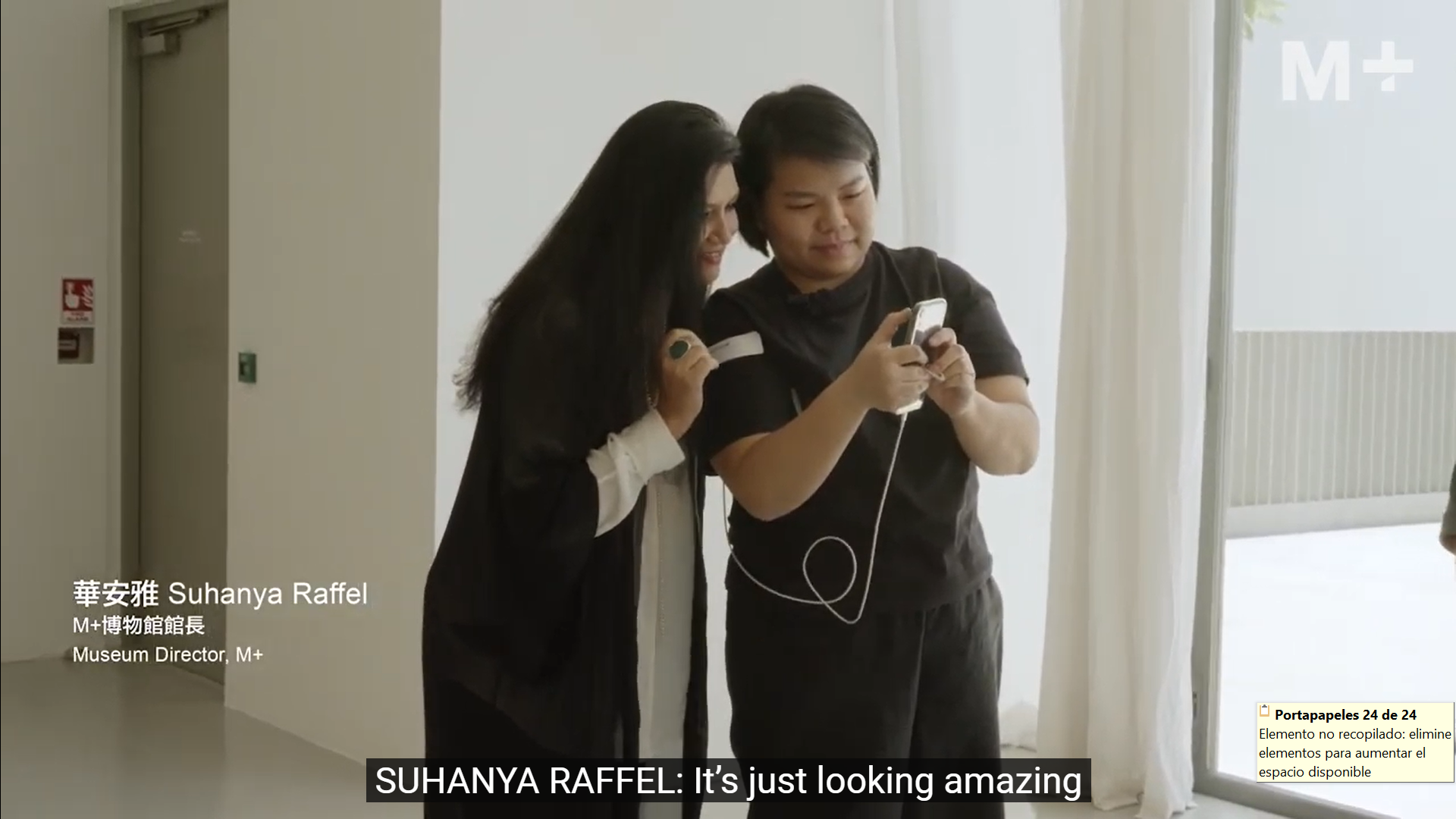CIMAM Toolkit Environmental Sustainability

Examples of Immediate Actions
This section of CIMAM's Environmental Sustainability in Museum Practice Toolkit collates a series of actions and solutions that are currently being implemented in the museums and curatorial projects of CIMAM Board members 2020–22.
EXHIBITIONS AND PROGRAMS
- Extend the duration of exhibitions to over 3 months and a half or even longer. Sensitive works from a conservation perspective are discussed separately.
- Greater focus on local artists and works from the collection.
- Use virtual couriers. And analyze in each case which is the most suitable transport for the artwork and the environment.
- Plan for international exhibitions to be installed remotely, without the artists and external curators.
- Reusable exhibition furniture, such as display cases and frames, reusing walls from previous exhibitions, developing modular temporary walls, and reusing wooden flooring employed to protect during the installation.
- List the stored items, create guidelines for exhibition designers regarding which materials could be used, non-toxic, recyclable, or reusable, etc.
- Offer workshops and training programs to help foster awareness of the need to protect our environment.
- Produce virtual materials for families, learners, the disabled, and everyone to access online.
MUSEUM STAFF
- Hire staff to work remotely, including research and viewing of artworks for acquisition.
- Involve all museum staff and departments in all stages of the planning and executing of the Sustainability Plan.
- Provide training to your staff, consulting experts, and commissioning professional reports.
- Obtain certificates to rate the environmental sustainability performance of your programs, operations, and building management.
- Apply for grants that support environmental operational changes and the production of environmental-related programs.
OPERATIONS AND BUILDING EFFICIENCY
- Establish a responsible policy for the use of administrative consumables.
- Establish a low-print policy with a move to digital communication, including reports for Councils and Ministries.
- Print only the essentials. If you print, do it double-sided.
- Reduce printed promotional materials such as leaflets, postcards, invitations, etc.
- Rethink publications formats. E-catalogs, for example, can be purchased online.
- Make inventories of the types of paper used and choose the most environmentally respectful.
- If you print, use Km0 printers (incurring no flights) using eco ink and recycled paper.
- Establish an internal waste-sorting guide.
- Convert the lighting system to LED.
- Install photovoltaic panels in your building.
- Composting, also by the restaurant and café.
- Increase Km0 products and vegetarian options in your restaurant and café.
- Zero plastic. Including replacing plastic garbage bags with ecological ones.
- Use tap water instead of bottled – in the museum, restaurant, and café. If tap water is not possible, then build a safe water supply to reduce the number of plastic bottles.
- Use regular cups instead of paper or plastic cups. Zero waste.
- Create bicycle parking to encourage museum staff and visitors to cycle.
- Partner with like-minded museums and venues to share and reuse resources.
- Work in alliance with public and private entities that may help you in realizing your green mission and promote environmental awareness.
- Install a rainwater tank to water the green areas surrounding the museum.
- Review the irrigation circuits for the venue's green areas. Ensure they are controlled and adequate. consumption of water according to the season.
- The most effective way to reduce waste is to not create it in the first place.

Due to the COVID-19 pandemic, artist Shirley Tse and guest curator Christina Li were unable to travel to Hong Kong for the installation at M+ of Shirley Tse: Stakes and Holders. The exhibition was installed through extensive dialogue across three different time zones – between the artist in Los Angeles, the guest curator in Amsterdam, and the curatorial and installation team in Hong Kong. Watch the full video here.

Another example is artist Phyllida Barlow's virtual installation for Another Energy: Power to Continue Challenging exhibition at Mori Art Museum where both the artist and curators (Mami Kataoka and Martin Germann) worked remotely.

The Museo de Arte Moderno de Buenos Aires, Argentina has extended the length of the exhibitions according to their size:
Major Exhibitions (800–1200m2) used to last 7 months, from 2020 onwards they last 1 year.
Medium Exhibitions (400–800m2) last an average of 6–7 months.
Small or Project shows (80m2) of younger artists or research projects usually last 3–6 months.